Archaeopterygidae
|
The Archaeopterygidae is the family that includes the three recognized species of Archaeopteryx. This group is generally recognized as the most basal birds.
Actual fossil of Archaeopteryx siemensii, the "Thermopolis specimen", one of the best preserved specimens.
Solnhofen Limestone, Germany
Late Jurassic Period, 150 Ma
Wyoming Dinosaur Center
|
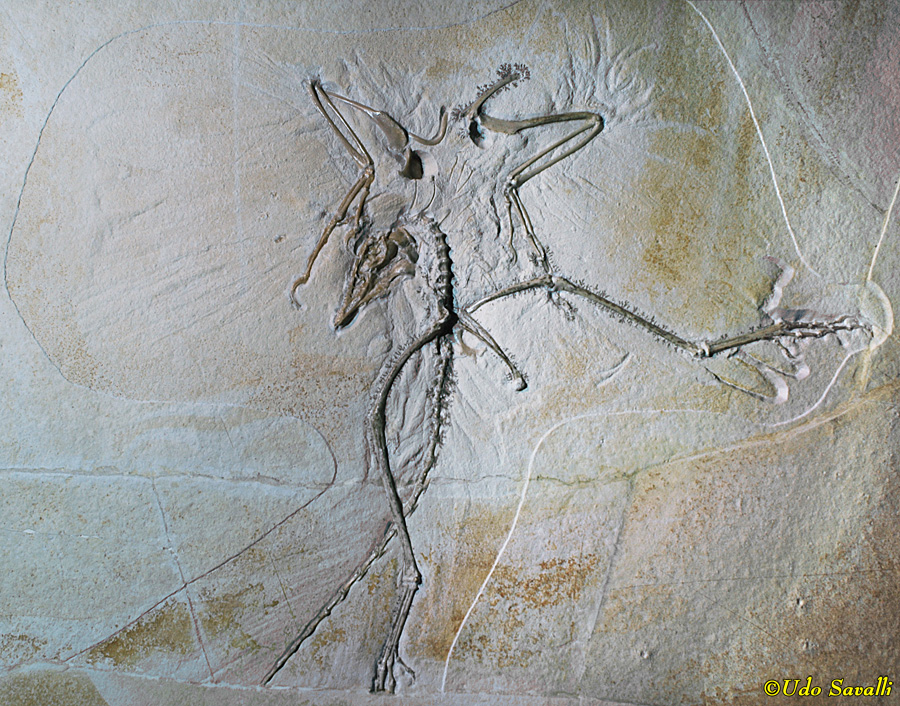
|
|
|
Cast of Archaeopteryx siemensii "Berlin specimen", the best known specimen.
Solnhofen Limestone, Germany
Late Jurassic Period, 150 Ma
Museum of Ancient Life, Utah
|
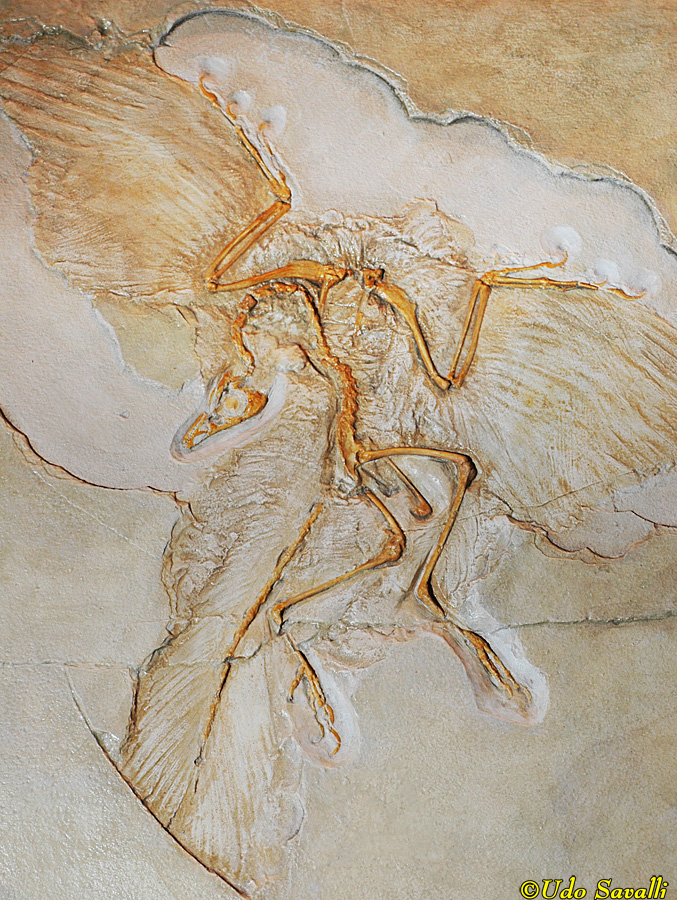
|
|
|
Actual fossil of Archaeopteryx lithographica, the "Chicago specimen". This is the most recent specimen to be prepared and made public (in 2024).
Several species (and even genera) have been named from the 12 Archaeopteryx specimens, based on differences in size (probably at least in part due to age differences), proportions, and some subtle skeletal features. In the most recent analysis, only 1 genus with 3 species is recognized (slightly smaller A. lithographica, larger A. siemensii, and the slightly younger [more recent] A. albersdoerferi).
Solnhofen Limestone, Germany
Late Jurassic Period, 155 Ma
Field Museum of Natural History, Chicago, IL
|
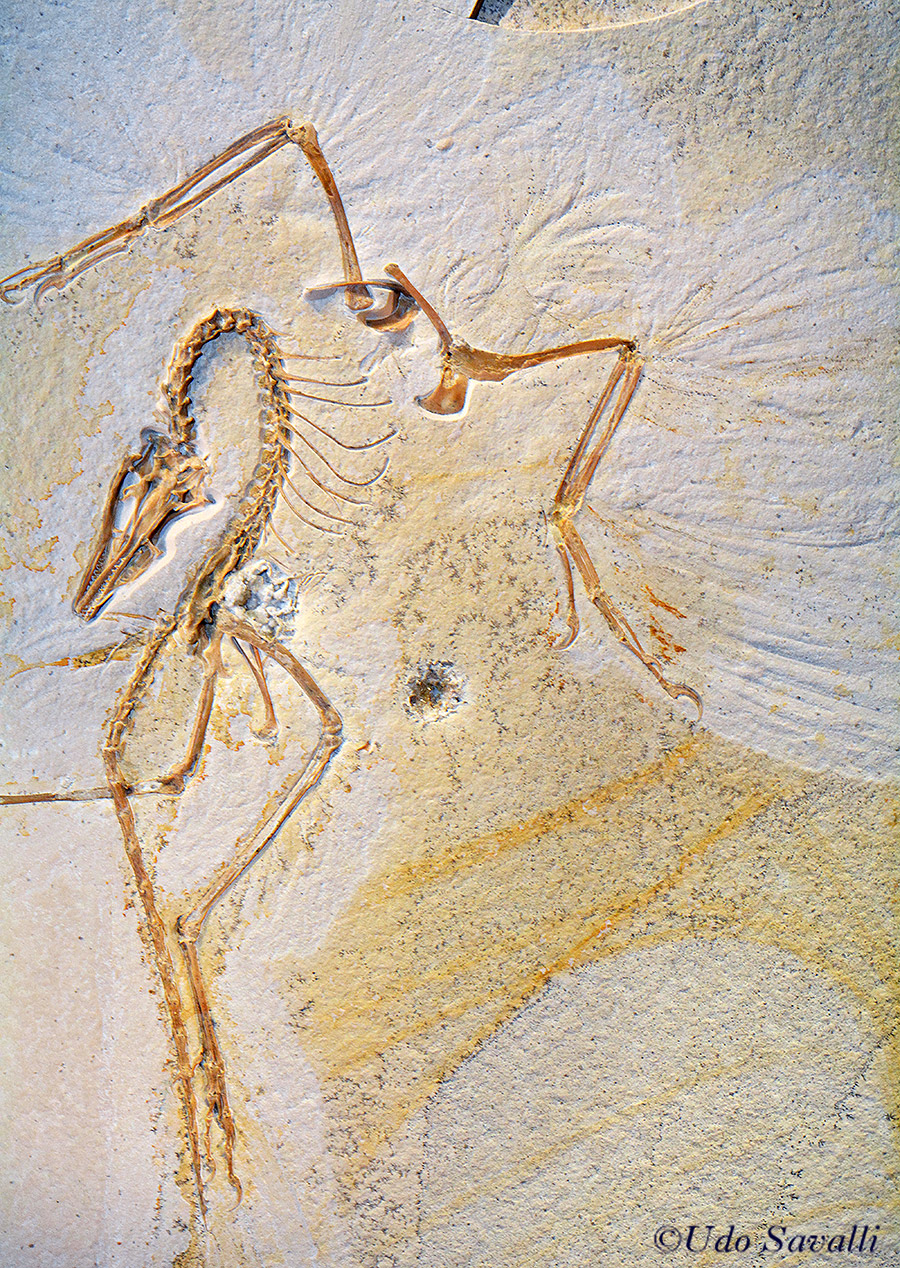
|
|
|
Cast of Archaeopteryx lithographica, the "London specimen". This was the first skeleton of Archaeopteryx to be found in 1861 (an isolated feather was found the year before). Only fragments of the skull are present.
The original specimen is the Neotype, the specimen now used to represent the species A. lithographica and the genus Archaeopteryx (the original holotype was the single feather and is non-diagnostic so this specimen is used the type specimen instead).
Solnhofen Limestone, Germany
Late Jurassic Period, 155 Ma
Field Museum of Natural History, Chicago, IL
|
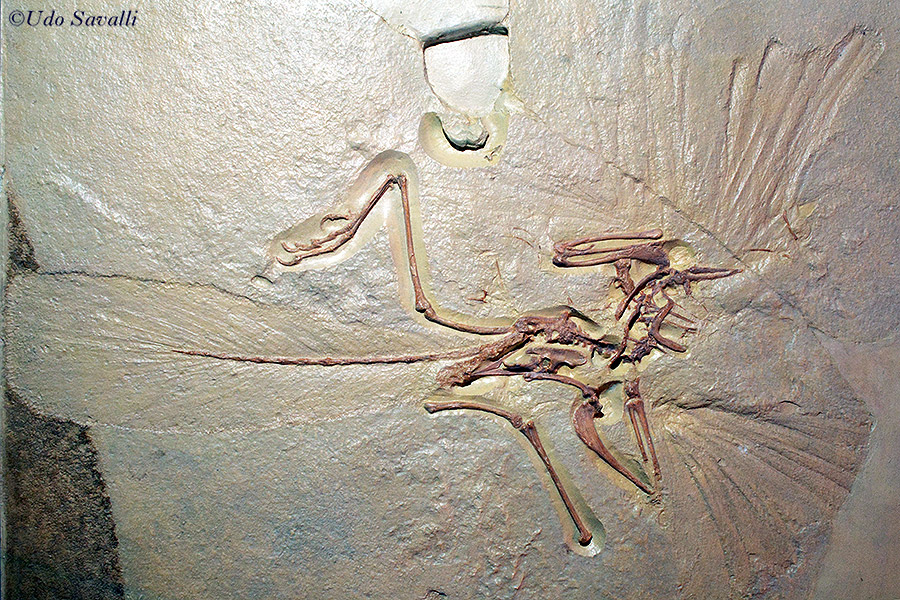
|
|
|
Cast of Archaeopteryx lithographica, the "Eichstätt specimen". This specimen did not preserve any feather impressions.
Solnhofen Limestone, Germany
Late Jurassic Period, 155 Ma
Rocky Mountain Dinosaur Resource Center, Colorado
|
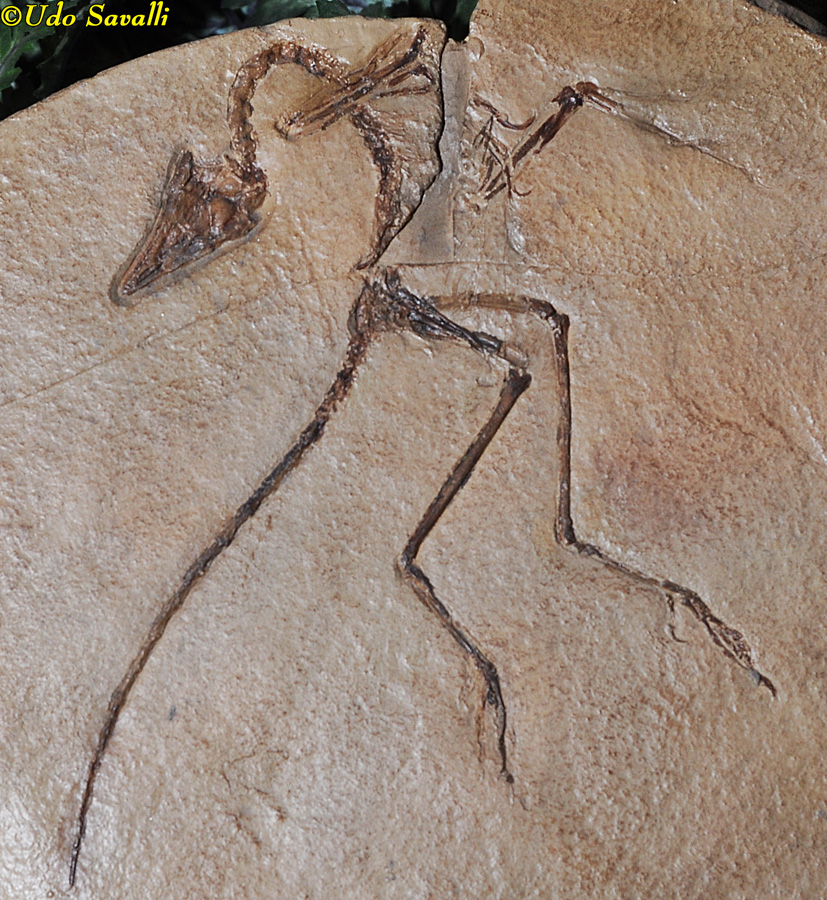
|
|
|
Archaeopteryx sp. reconstructed skeleton.
Germany
Late Jurassic Period, 150 Ma
Los Angeles Museum of Natural History
|
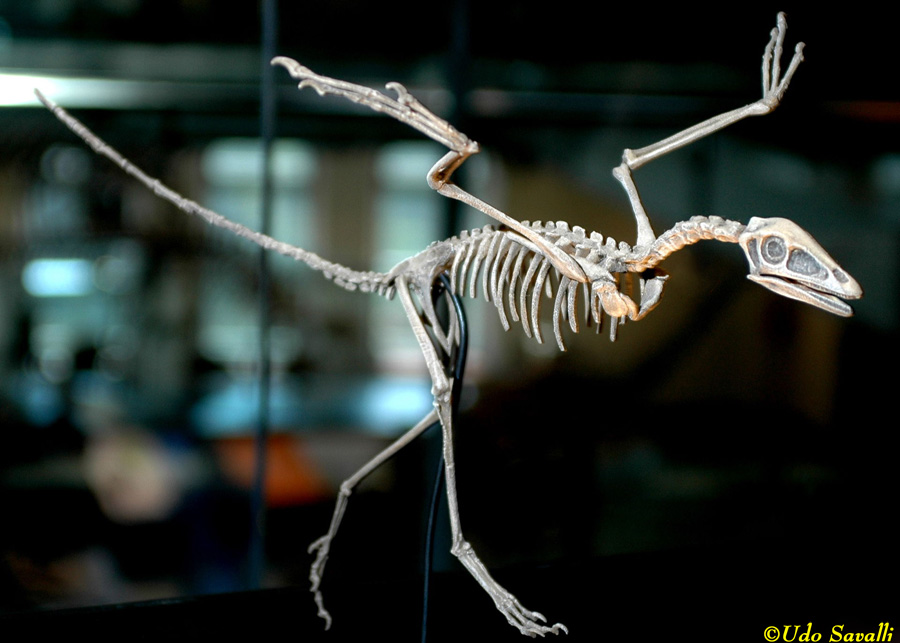
|
|
Confuciusornithiformes
|
Confuciusornis sanctus was a very primitive bird in the Order Confuciusornithiformes, but it was more derived than Archaeopteryx. Like Archaeopteryx, it retained clawed fingers, and a relatively primitive pelvis. It resembled modern birds in having a very short tail and a toothless beak, a characteristic that evolved several times among early birds.
China
Early Cretaceous Period, 125-119 Ma
Arizona Museum of Natural History (temporary exhibit)
|
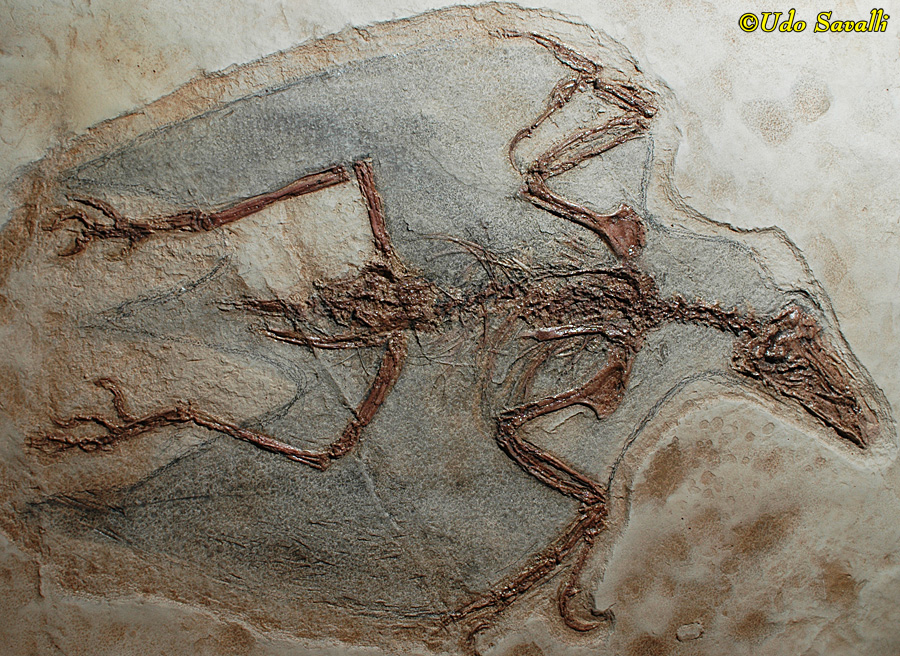
|
|
|
Many Confuciusornis sanctus fossils have been found, often with feather impressions. About half of them have a long pair of streaming tail feathers, such as in this fossil, suggesting it is a male (compare to the female above).
Chaomidianzi & Yixian Formations, Liaoning Prov, China
Early Cretaceous Period, 125-119 Ma
Black Hills Institute Museum, South Dakota
|
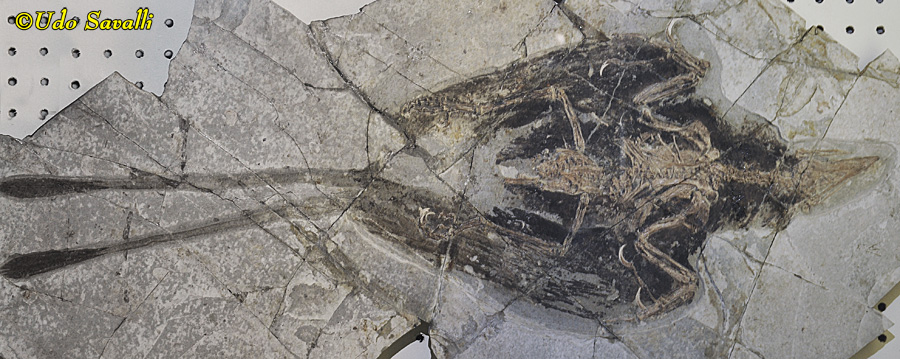
|
|
|
Another Confuciusornis sanctus fossil.
China
Early Cretaceous Period, 125-119 Ma
Museum of Ancient Life, Utah
|
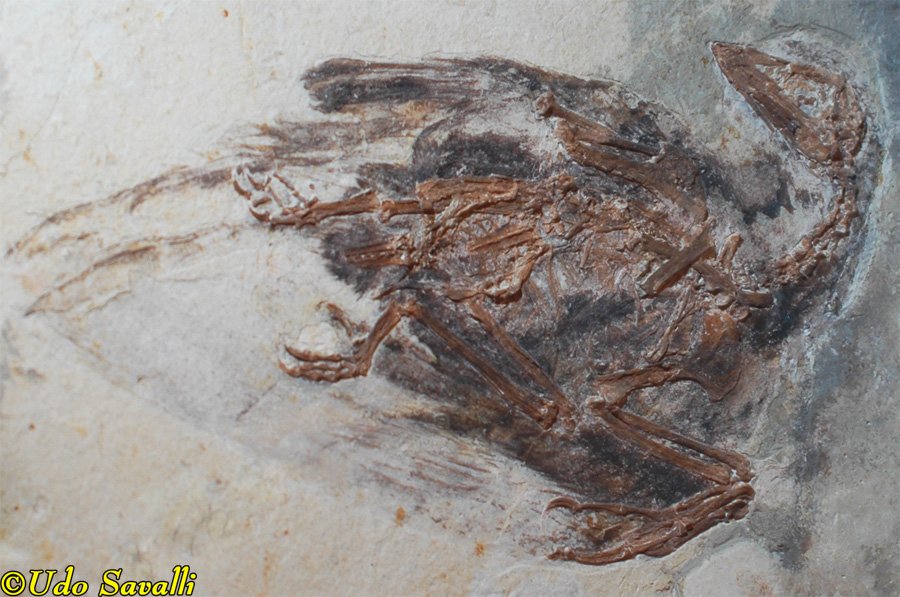
|
|
|
Life models of a pair of Confuciusornis sanctus. Note the long streaming tail feathers of the male.
Taxonomy: Aves; Confuciusornithiformes
Early Cretaceous Period, 125-119 Ma; China
Fernbank Museum of Natural History, Georgia
|
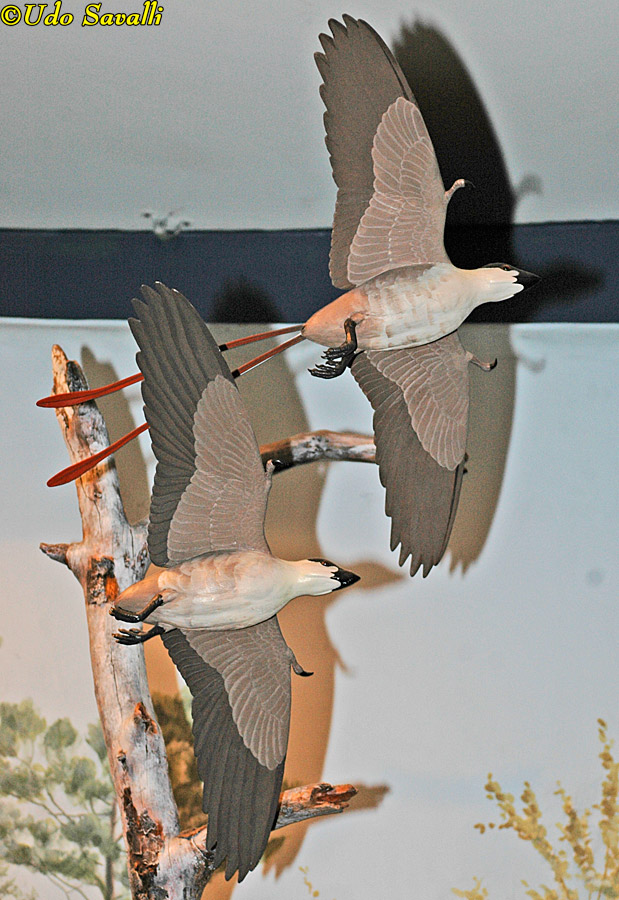
|
|
|
Life model of Sapeornis chaoyangensis, an early bird about as advanced as Confuciusornis. It was probably a poor flyer and relied more on gliding or soaring. It probably fed on seeds.
Taxonomy: Aves; Omnivoropterygiformes
Early Cretaceous Period, 125-119 Ma; China
Fernbank Museum of Natural History, Georgia
|
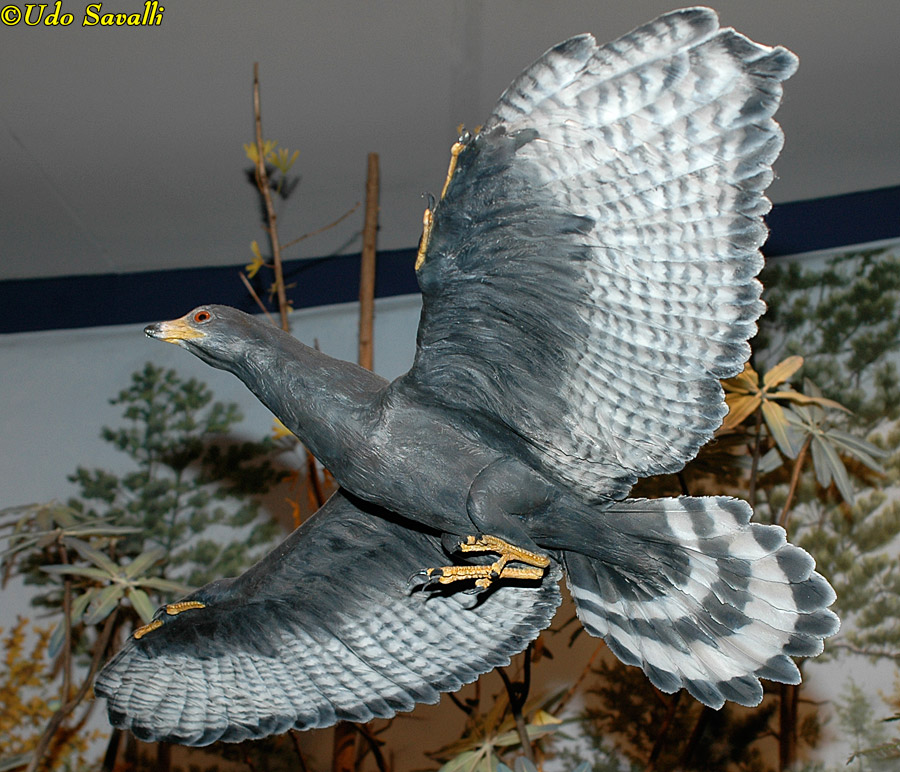
|
|
Enantiornithes
|
The Enantiornithes were another group of early birds, slightly more derived (closer to modern birds) than the Confuciusornithiformes. Their name means "opposite birds," a reference to the shape of the shoulder joint that is opposite of that in modern birds. Although their proportions (compact body and short tail) were similar to modern birds, they retained the clawed fingers and teeth. The lacked retrices (flight feathers of the tail), but some had long ornamental tail feathers. This group became very diverse during the Cretaceous Period but went extinct at the end of the Mesozoic Era and left no modern descendants.
This is an actual fossil of Eoenantiornis bubleri
Chaomidianzi & Yixian Formations, Liaoning Prov, China
Early Cretaceous Period, 122 Ma
Black Hills Institute Museum, South Dakota
|
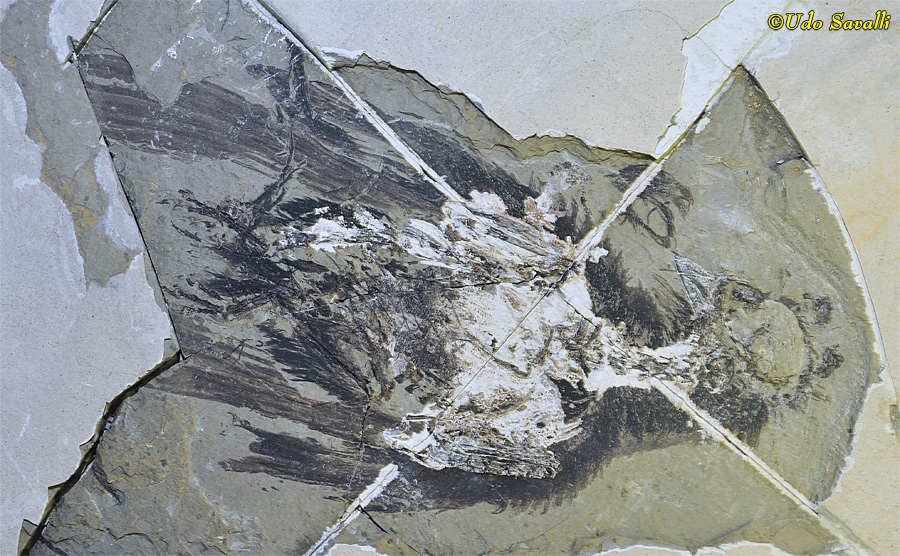
|
|
|
Liaoxiornis delicatus is a problematic species since it based on juveniles and hatchlings that may belong to a different adult species. Specimens such as these suggest that the Enantiornithes were mostly precocial (able to leave the nest at an early age).
Chaomidianzi & Yixian Formations, Liaoning Prov, China
Early Cretaceous Period, 122 Ma
Black Hills Institute Museum, South Dakota
|
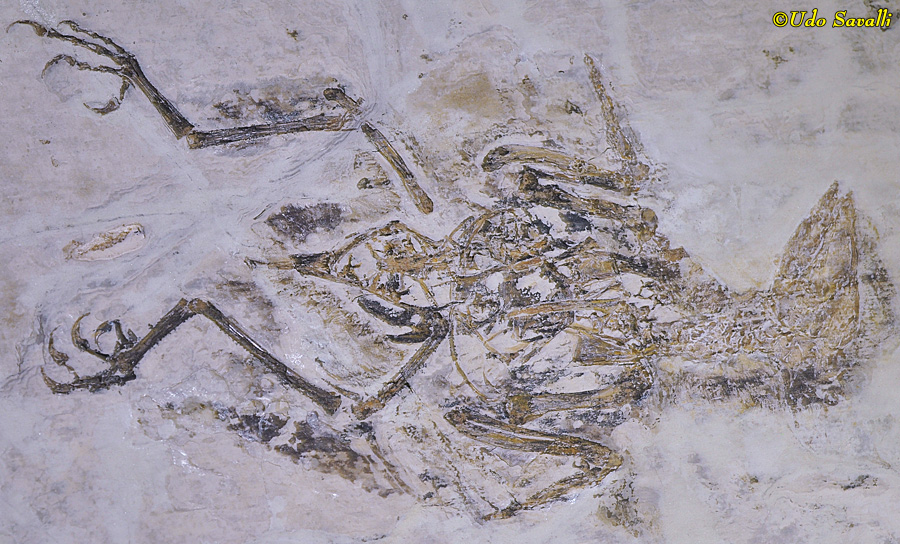
|
|
|
Life model of Longipteryx chaoyangensis. Note the teeth at the tip of its long beak. Its flight abilities and perching abilities were relatively advanced compared to other contemporary birds.
Taxonomy: Aves; Enantiornithes; Longipterygidae
Early Cretaceous Period, 130-125 Ma; China
Fernbank Museum of Natural History, Georgia
|
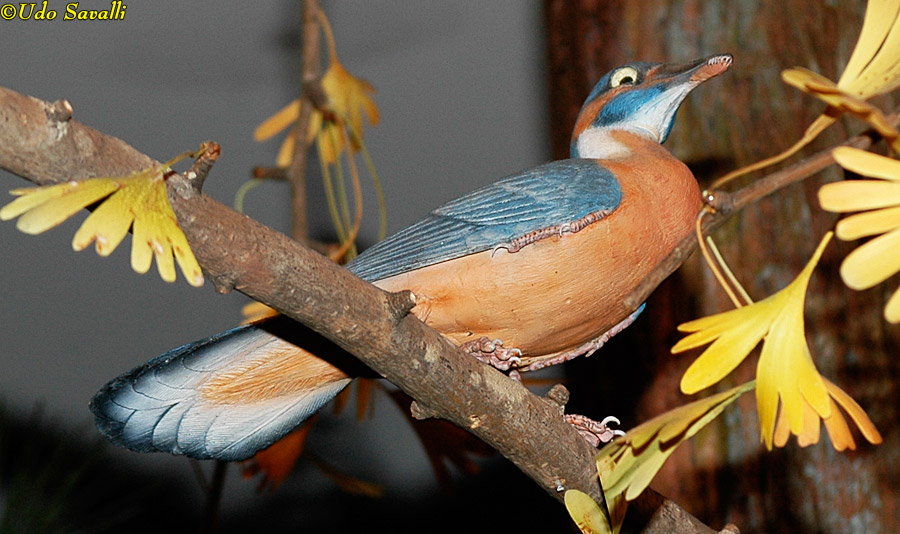
|
|
Ornithurae: Late Cretaceous Sea Birds
|
The Ornithurae is the clade of birds more derived (more closely related to modern birds) than those described above. It includes all of the following species as well as all modern birds.
Ichthyornithiformes is a clade of toothed seabirds. Their skeletons wre similar to modern birds (lacking wing claws, for example), but they still had teeth. They may have been similar to seagulls in lifestyle and outward appearance.
Ichthyornis dispar skeleton
Niobrara Chalk, Lane Co., Kansas
Late Cretaceous Period, 85 Ma
Rocky Mountain Dinosaur Resource Center, Colorado
|
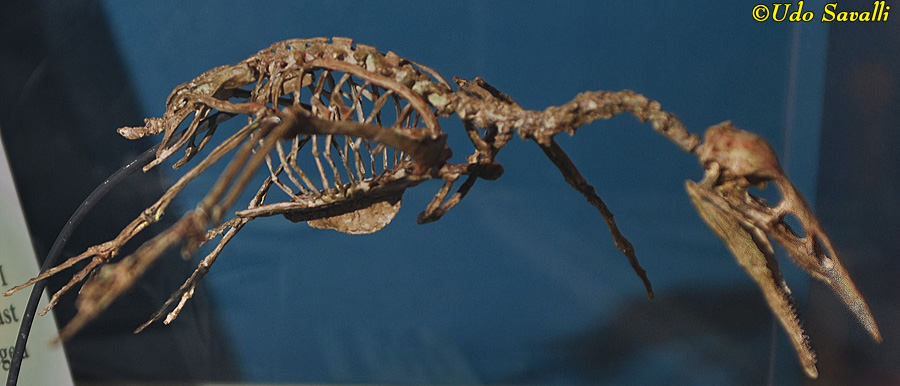
|
|
|
Life model of Ichthyornis sp., a gull-like sea-bird. Like other primitive birds, it had teeth.
Taxonomy: Aves; Ichthyornithiformes
Late Cretaceous Period, 95-85 Ma; Western North America
New Mexico Museum of Natural History & Science
|
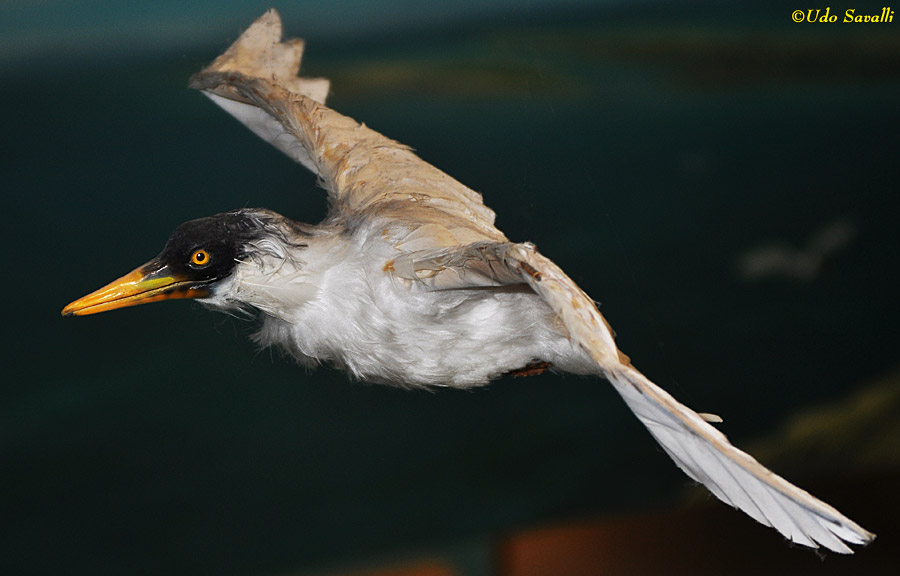
|
|
|
Life model of Hesperornis regalis, a highly specialized diving sea-bird that was secondarily flightless.
Taxonomy: Aves; Hesperornithiformes
Late Cretaceous Period, 84-78 Ma; Western North America
New Mexico Museum of Natural History & Science
|
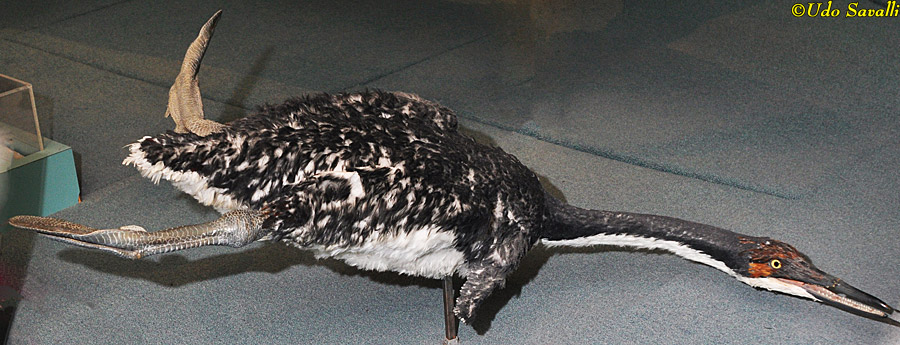
|
|
Neornithes
|
Neornithes is the crown-group clade that includes all modern birds. Characteristics include a beak and the loss of teeth and other more subtle changes to the skeleton. Although this group originated prior to the K-Pg extinction, it diversified rapidly afterwards.
Following the extinction of the dinosaurs, several groups of birds evolved large, flightless forms. Gastornis gigantea (formerly Diatryma gigantea) is related to modern land fowl (chickens, etc.) and water fowl (ducks, etc.).
North America
Early Eocene Epoch, 55 Ma
Arizona Museum of Natural History
|
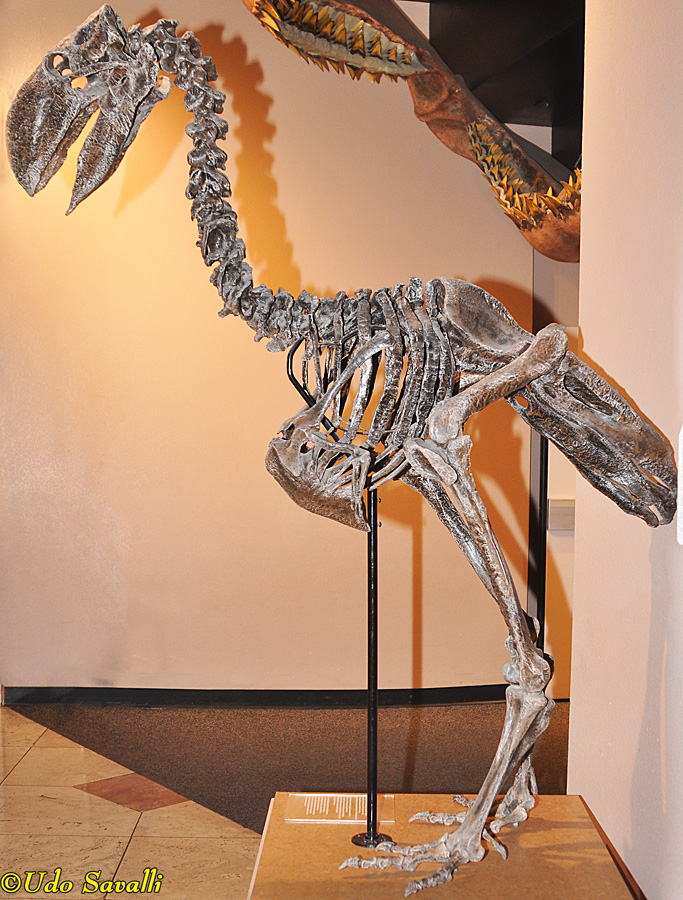
|
|
|
The terrorbird Andalgalornis ferox (Order Cariamiformes) is also large and flightless, but is not related to Gastornis (above). Instead, its closest living relatives are the obscure South American seriamas.
Argentina
Late Miocene Epoch, 9-7 Ma
Field Museum of Natural History, Chicago, IL
|
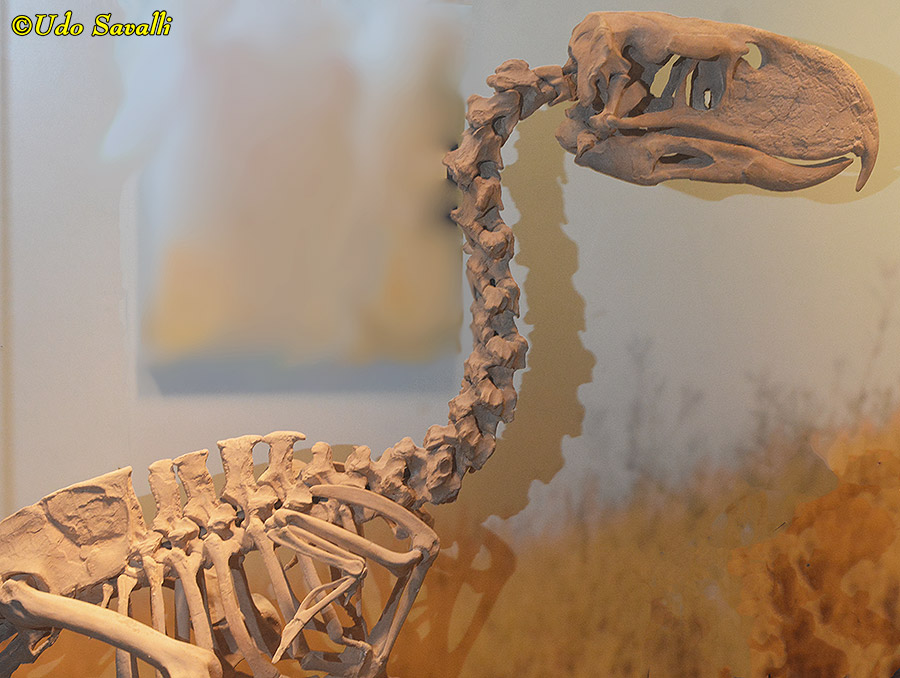
|
|
|
Pseudocrypturus cercanaxius (extinct Order Lithornithiformes) is related to modern birds such as tinamous and ostriches.
Green River Formation, Wyoming
Eocene Epoch, 50 Ma
Fossil Butte National Monument
|
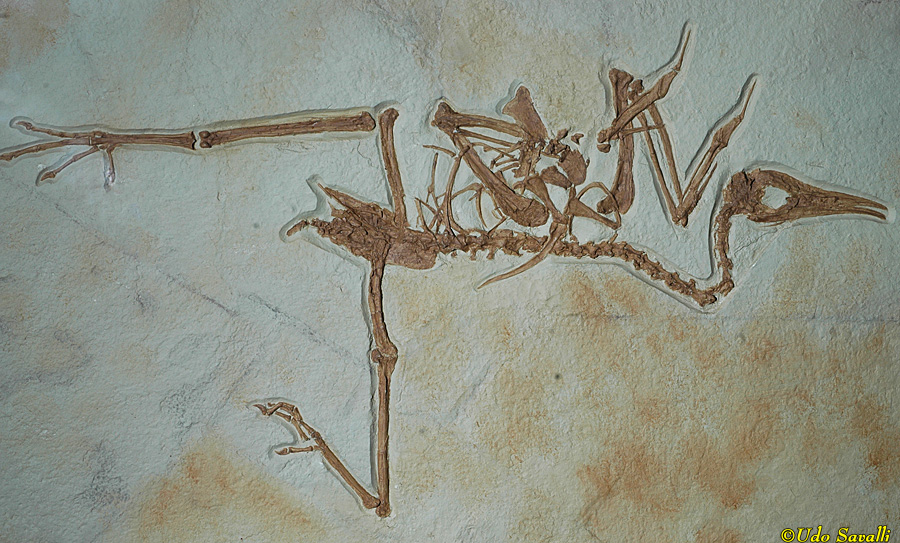
|
|
|
Limnofregata azygosternon (Order Suliformes) is an extinct frigatebird, a type of seabird.
Green River Formation, Wyoming
Eocene Epoch, 52 Ma
Field Museum of Natural History, Chicago, IL
|
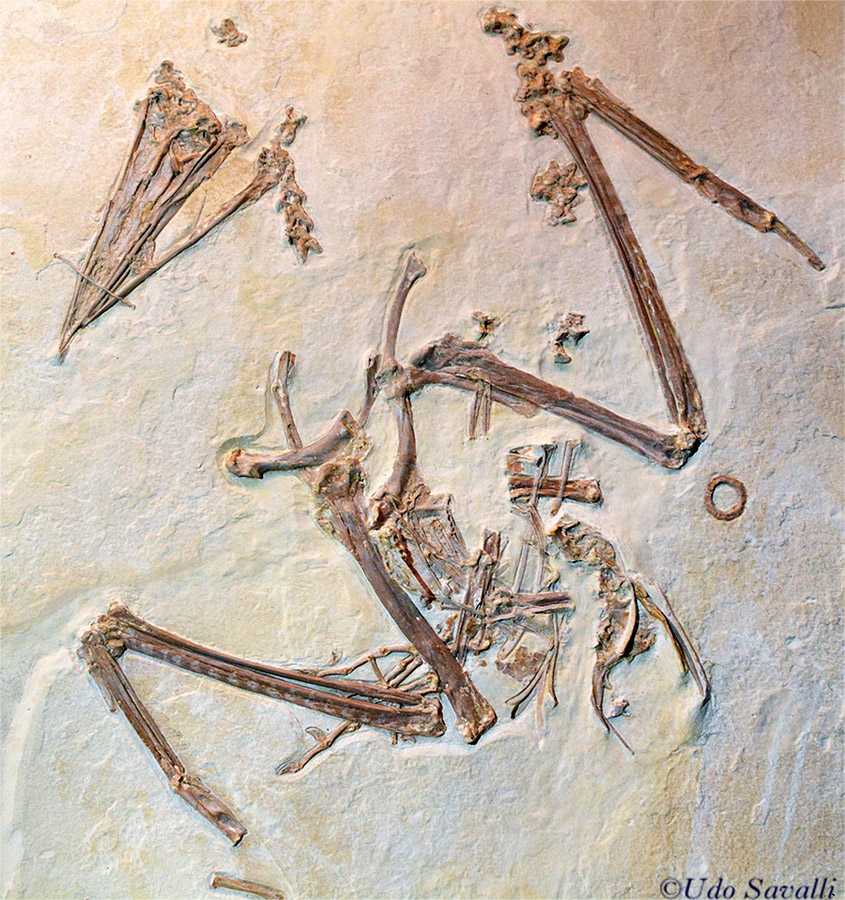
|
|
|
Gallinuloides wyomingensis (cast) is related to modern land fowl (Order Galliformes) such as chickens, grouse, and quail.
Green River Formation, Wyoming
Eocene Epoch, 48 Ma
Fossil Butte National Monument
|

|
|
|
Primnobucco mcgrewi is related to modern birds such as kingfishers (Order Coraciiformes).
Green River Formation, Wyoming
Eocene Epoch, 48 Ma
Fossil Butte National Monument
|
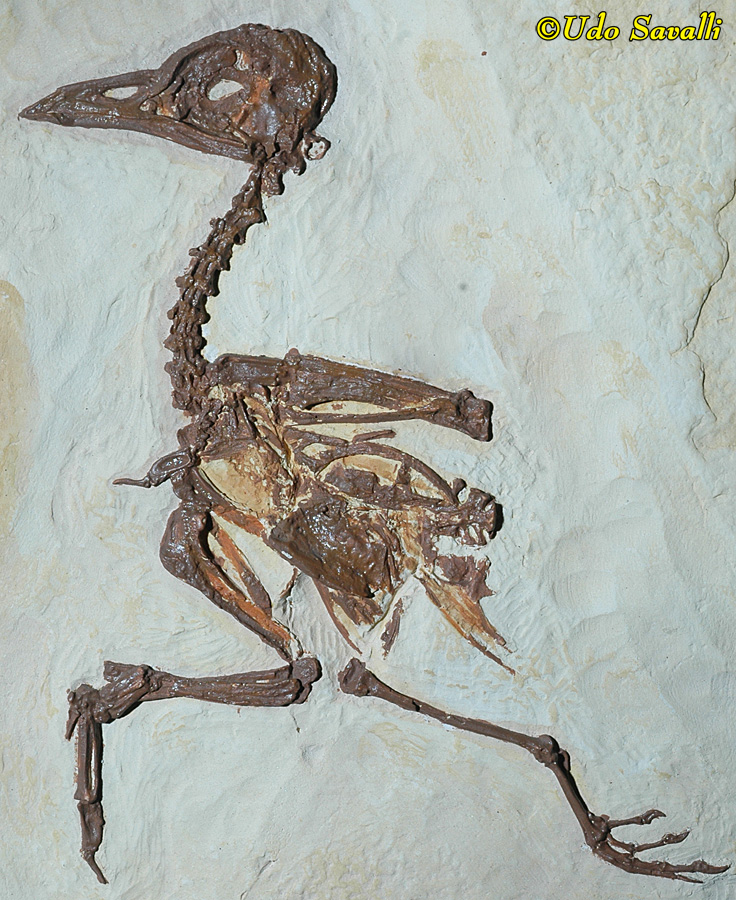
|
|
|
Fluvioviridavis platyrhamphus is a "nightbird", the group that includes nightjars and nighthawks (mostly noturnal insect-eaters).
Green River Formation, Wyoming
Eocene Epoch, 52 Ma
Field Museum of Natural History, Chicago, IL
|
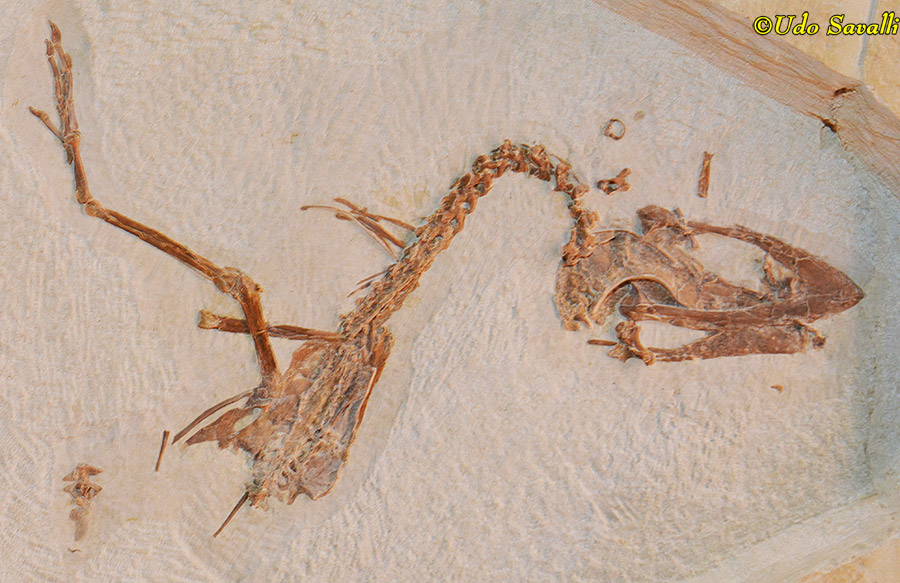
|
|
|
Celericolius acriala is related to modern mousebirds (Order Coliiformes), a small group restricted to Africa. This specimen is the holotype, the specimen that was used to name the species.
Green River Formation, Wyoming
Eocene Epoch, 52 Ma
Field Museum of Natural History, Chicago, IL
|
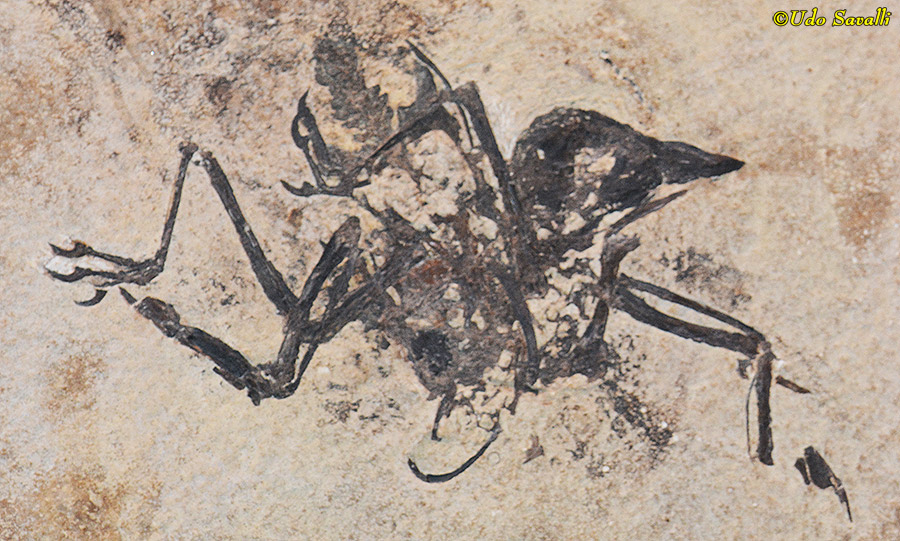
|
|
|
Eofringillirostrum boudreauxi is part of a group that includes parrots and songbirds, but exactly where in this group it fits is not clear. This specimen is the holotype of this species.
Green River Formation, Wyoming
Eocene Epoch, 52 Ma
Field Museum of Natural History, Chicago, IL
|
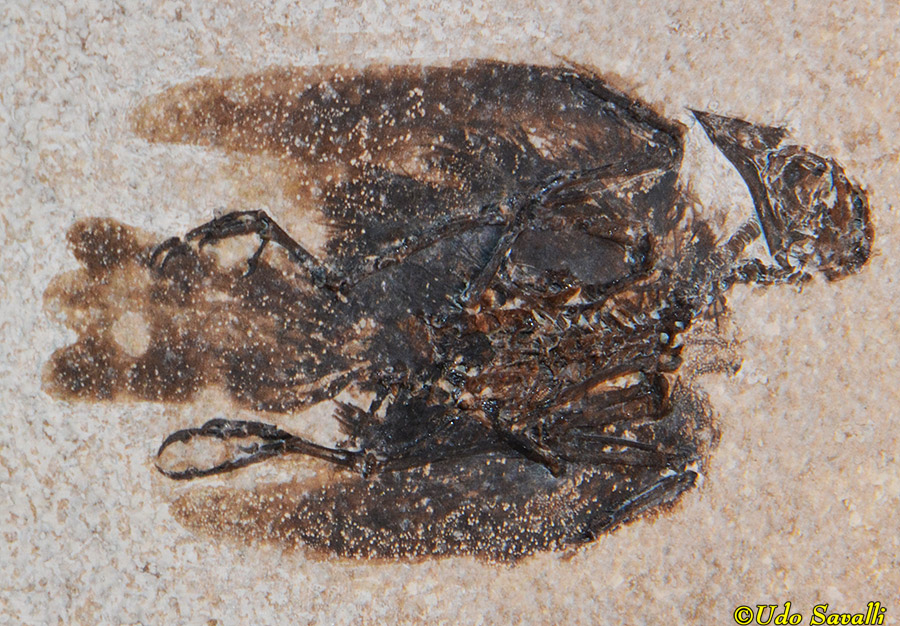
|
|
|
Spheniscus megaramphus, an extinct penguin (Order Sphenisciformes).
Pisco Formation, Montemar, Areequia, Peru
Late Miocene Epoch
Black Hills Institute Museum, South Dakota
|
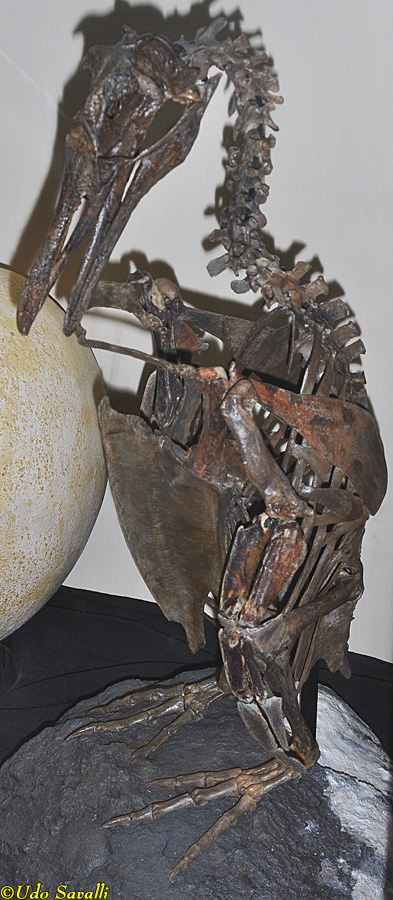
|
|
|
Skeleton of Merriam's Giant Condor, Teratornis merriami (Order Accipitriformes).
La Brea Tar Pits, California
Pleistocene Epoch
Page Museum, Los Angeles
|

|
|
|
Fragile Eagle, Hypomorphnus fragilis, skeleton (Order Accipitriformes).
La Brea Tar Pits, California
Pleistocene Epoch
Page Museum, Los Angeles
|
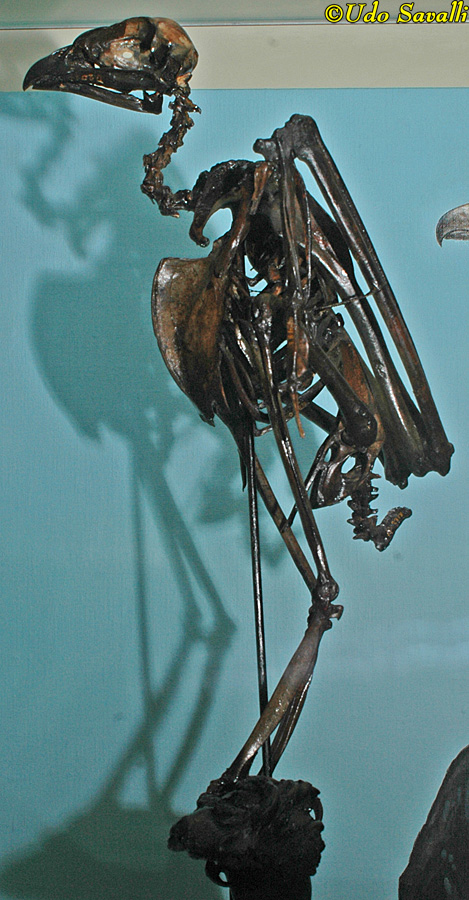
|
|
|
Occidental Vulture, Coragyps occidentalis (Order Accipitriformes).
La Brea Tar Pits, California
Pleistocene Epoch
Page Museum, Los Angeles
|
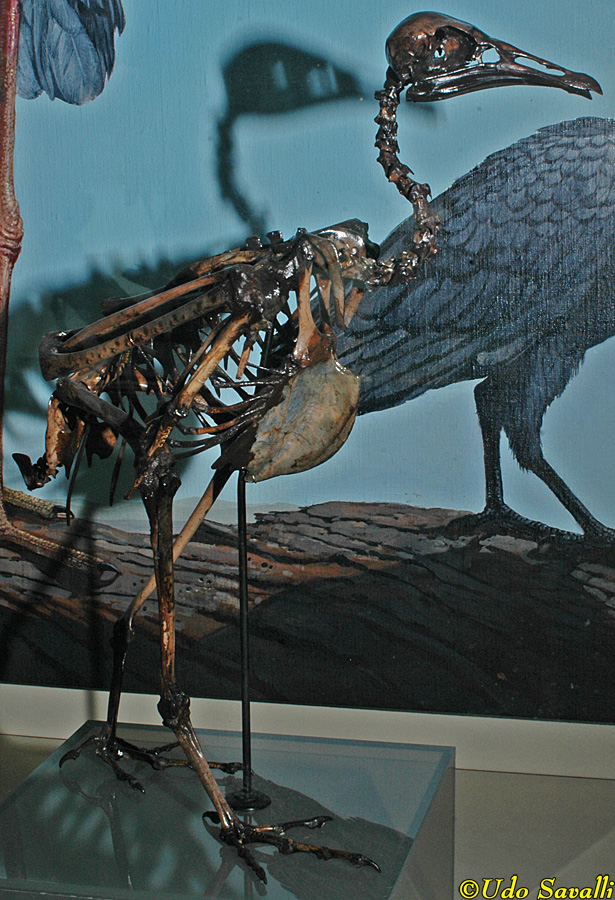
|
|
|
The La Brea Caracara Skeleton, Polyborus prelutosus, is related to falcons (Order Falconiformes).
La Brea Tar Pits, California
Pleistocene Epoch
Page Museum, Los Angeles
|
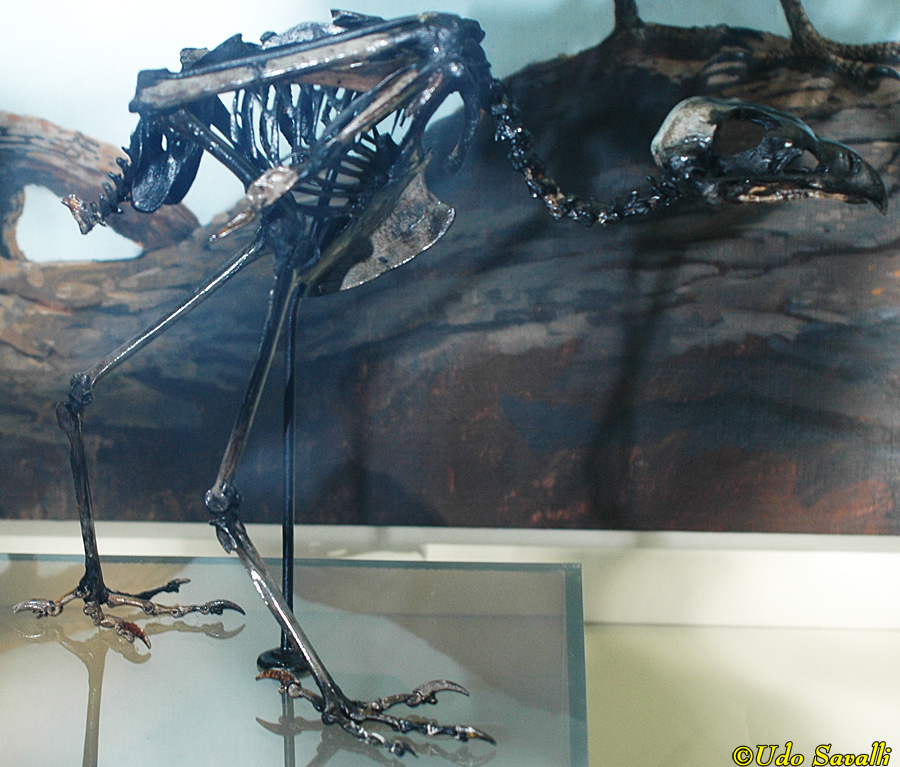
|
|
|
La Brea Stork Skeleton, Ciconia maltha (Order Ciconiiformes).
La Brea Tar Pits, California
Pleistocene Epoch
Page Museum, Los Angeles
|
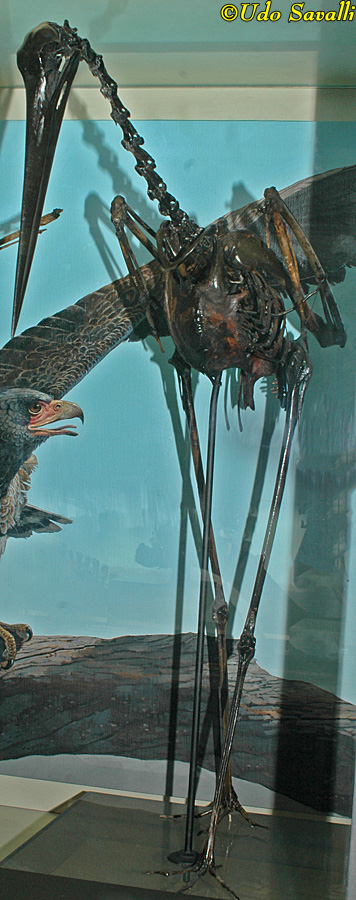
|
|
|































